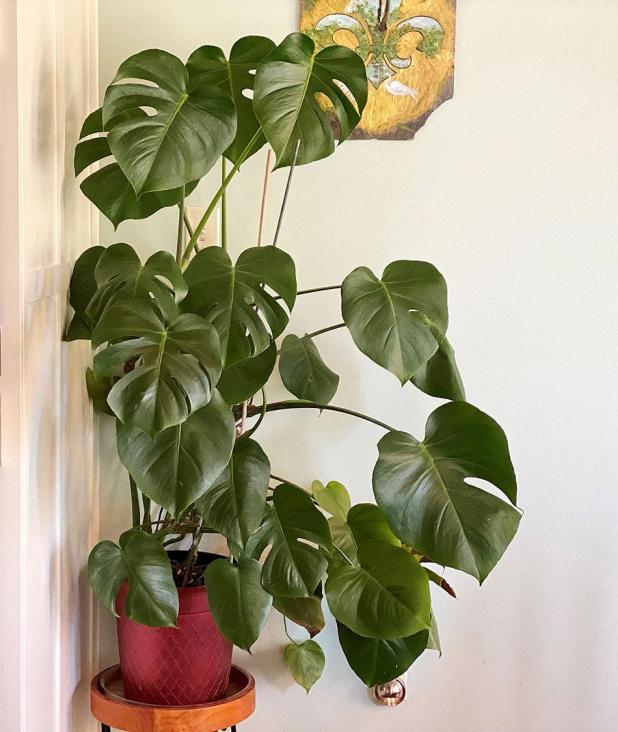
Monstera is a tropical vine from Central and South America that is grown as indoor houseplant for its large, glossy leaves.
—LSU AgCenter/Heather Kirk-Ballard
Get It Growing: Throwback houseplants are back
Houseplants have made a major comeback in recent years — partially due to the pandemic and people spending more time at home, and partially due to the impact of social media. Throwback houseplants are back in vogue. Interior designers and lifestyle influencers on visual media platforms such as Pinterest and Instagram have made houseplants just as trendy as they were in the 1970s.
Ty Strode, vice president and director of marketing at Florida wholesale nursery grower Agri-Starts, says tropical foliage is an obvious choice for a new generation of plant owners. These plants can thrive in low light, have easy care requirements and sport exotic-looking leaves.
Funky retro plants like monstera (Monstera spp.), commonly known as Swiss cheese plant, have surged in popularity. There is more than one type of monstera, but most people are familiar with Monstera deliciosa. This plant has large, lobed to heart-shaped, dark green leaves. They develop holes and slashes as the plant ages — hence the name Swiss cheese plant.
Other species include Monstera epipremnoides, which looks similar but has more prominent holes and slashes. In addition, Monstera adansonii has deeply defined heart-shaped leaves with holes throughout. No matter which species you select, all are easy-care plants with similar needs.
Monstera is a vining plant from the tropics of Central and South America. In its native habitat of the tropical rainforest, it can reach 70 feet in length. Leaves can grow up to 3 feet wide if given enough space. Young leaves do not at first display the holes and slashes created by a process known as fenestration; they develop them as they age. There are some theories for this adaptation, the main one being that the holes allow for light to pass through to the leaves beneath.
Monstera benefits from a peat-based potting media and bright, indirect sunlight. It does well indoors by large windows and on patios where it is protected from direct sunlight. Because monstera natively grows in dense rainforests protected from direct sunlight as the understory growth of larger trees, too much direct light during the summer will burn foliage. At the other end of the spectrum, too little light — such as in dim indoor areas — will stunt growth.
Additionally, monstera loves humidity. Water plants weekly and mist foliage, but let soil slightly dry out between watering to avoid root rot. A balanced liquid fertilizer every few weeks during late spring or a monthly organic fertilizer can be used to promote growth. Monstera can be easily propagated from cuttings or air layering with sphagnum moss.
Some common pests include thrips, mealybugs, scales and whiteflies. These can be avoided by wiping dust and debris off foliage with a damp sponge. Insecticidal soaps and neem oil are organic options for removing pests.
The vines grow very long, so staking will be necessary unless you have a large enough space to allow the vines to cascade over containers. Select larger planters with greater depth and support new upward growth with stakes. Remove yellowed, older leaves at the junction of the main stem. Plants will multiply, and you can easily split new growth off to start new containers.
Research has shown that having plants (in your home, office and any other indoor space where you spend a great deal of time) improves our health and wellbeing. There are so many good reasons to bring plants into your working and living areas. Indoor plants improve air quality by removing carbon dioxide, particulates and harmful chemicals.
Monstera is an eye-catching addition to large rooms with large windows. Smaller species can be used as a focal point on desks, display tables and windowsills.
This easy-care plant is a great choice for new “plant parents” just beginning their gardening journey. The houseplant trend has grown and will continue to grow in the future. Luckily, they can be grown year-round in our homes with no concern for weather patterns or natural disasters.
